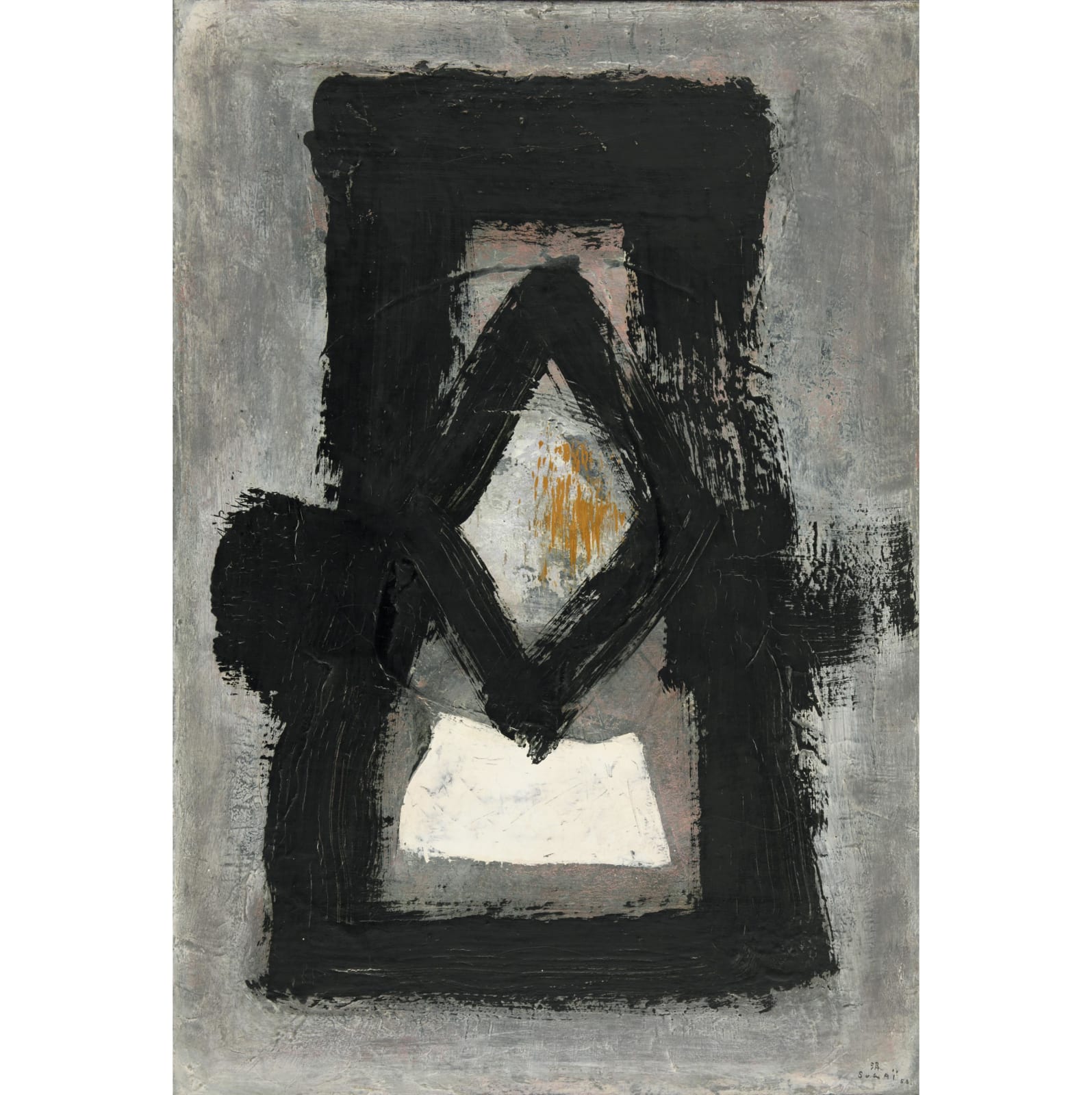Sugai Kumi (1919−1996)
KARASU
Oil on canvas, framed (20M)
Dated 1958
Signed and titled by the artist on the back
73 x 50 cm
75 x 52 cm (overall)
Further images
Sugai Kumi became an active painter since he left for Paris by himself in 1952. He worked in solitude, without knowing the language nor any friend, and his 1954 first solo show made him a name in Paris. Sugai’s simplified animal-like form, unique color scheme, and dry texture are considered of “sophisticated barbarity.” He later was allowed to exhibit as an École de Paris artist, and developed a dynamic and calligraphic style since his 1958 solo exhibition. The present work was executed in the same year. Is it a representation of a crow (J. karasu), or a fragmented pictograph? Despite the subtle and refined palette of the ground, on it the form consisting of a white block and a sign-like composition around in broad black lines gives out vibrant, strong energy.
Sugai’s artistic style shifted greatly around 1963 to 64. In comparison to the late style of geometrical forms and flat color fields omitting the presence of the artist’s characteristics, his early style strongly speaks of his individuality through simplified forms and multi-layered, softly colored ground. The present work clearly demonstrates the latter.
There are numerous anecdotes about Sugai’s thorough, sometimes even paranoid personality. He is said to have the same menu for meals every day to save time and energy; bought an even higher speed Porsche car after he was nearly hit to death in a car crash in his Porsche… Sugai is indeed a thorough character who constantly experiments in his artistic career so that to seek for the true subject of his art.
Sugai Kumi (painter; 1919–1996)
Kobe-born painter. Dropped out of Osaka College of Art. Learnt painting under Yoshihara Jiro, while conducting commercial design. Travelled to France at the age of 33 in 1952, and set his base in France since then. His style transformed from bold and heavy manner to flat, symbolized expression. One of the earliest Japanese artists to receive high recognition in Euro-America after the war.
Sugai’s artistic style shifted greatly around 1963 to 64. In comparison to the late style of geometrical forms and flat color fields omitting the presence of the artist’s characteristics, his early style strongly speaks of his individuality through simplified forms and multi-layered, softly colored ground. The present work clearly demonstrates the latter.
There are numerous anecdotes about Sugai’s thorough, sometimes even paranoid personality. He is said to have the same menu for meals every day to save time and energy; bought an even higher speed Porsche car after he was nearly hit to death in a car crash in his Porsche… Sugai is indeed a thorough character who constantly experiments in his artistic career so that to seek for the true subject of his art.
Sugai Kumi (painter; 1919–1996)
Kobe-born painter. Dropped out of Osaka College of Art. Learnt painting under Yoshihara Jiro, while conducting commercial design. Travelled to France at the age of 33 in 1952, and set his base in France since then. His style transformed from bold and heavy manner to flat, symbolized expression. One of the earliest Japanese artists to receive high recognition in Euro-America after the war.







